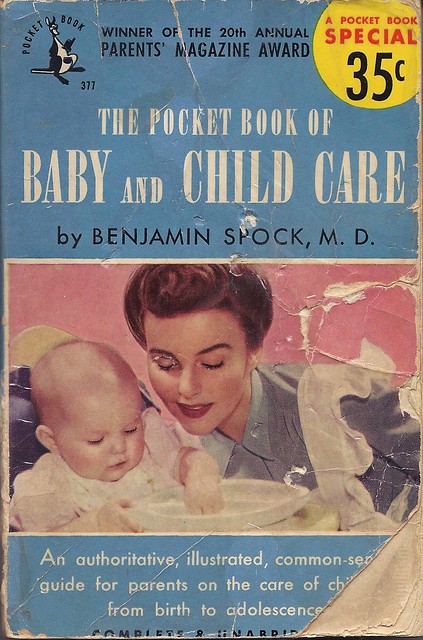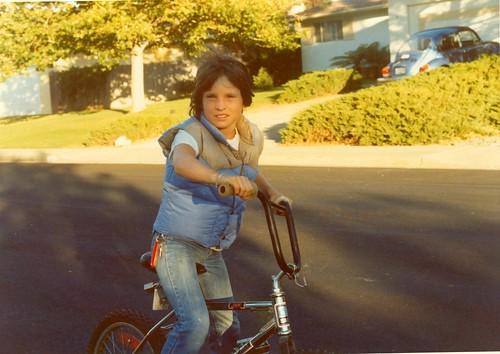11 minutes estimated reading time
Psychotherapy
Psychotherapy is using psychological techniques to to help improve:
- Happiness
- Mental wellbeing
- Behaviours, beliefs and compulsions that might be holding someone back from achieving their full potential in life
It can involve sessions that are one on one, or be part of a group experience.
Psychotherapy in culture
American TV brought the emotional and mental anguish of life into its programming, for instance, this segment from from Thirtysomething.
The TV series Frasier put the profession front-and-centre with both Frasier and Niles Crane being psychiatrists by profession. It even brought up the subject of therapy for animals.
Hollywood has often looked to develop characters by showing them undergoing therapy.
Probably the most famous example is the relationship between Robin Williams as the therapist Dr. Sean Maguire and Matt Damon as his court-mandated patient Will Hunting in Good Will Hunting.
Over the past 20 years therapy as an activity has become much more mainstream in the UK. And this has been reflected in the media, such as this plot line from the critically-acclaimed BBC comedy series Fleabag, which shows how mental health and therapy have become part of modern middle-class life.
Age of anxiety
Elizabeth Wurtzel’s Prozac Nation was published in 1994; yet feels very now. At the time of publishing it turned the drug brand Prozac into a household name. The black and white cover photo of a vacant Wurtzel fitted very much into the grunge aesthetic. As did the authors tale of being a young American battling against depression. There was even a counter-movement over the years of writers who looked to provide alternatives to Prozac (and its peers like Paxil and Zoloft). Their solutions ran from potatoes, to Plato or God.
Moving forward some three decades and Wurtzel’s writing resonate with a generation battling anxiety and reshaping society around their angst.
Modern world events from wild fires and climate change seems to have created the conditions for a collective sense of hopelessness and grief. A 10-country survey with a sample size of 10,000 people aged 16 – 25 published in The Lancet found high rates of pessimism. 45 percent of respondents were said worry about climate negatively affected their daily life. Three-quarters of respondents believed “the future is frightening,” and 56 percent said “humanity is doomed.”
Roots of a crisis
Wurtzel’s generation too grew up with climate changes, the ozone layer, economic uncertainty due to globalisation and deindustrialisation. They watched the most dynamic economic power on the planet hit a brick wall with the Japanese economic miracle, the internet bubble and imminent global thermonuclear war.
Over the past half-century we’ve seen wealth flow to the richest while the middle class stagnates or shrinks.
So the stressors for anxiety that needs psychotherapy are neither new, nor are they unique. But they have uniquely manifested themselves creating a mass market for psychotherapy in different forms. Like generations of children before them they were brought up as individuals with an upbringing influenced by Benjamin Spock’s The Common Sense Book of Baby and Child Care which shaped childcare from the post-war era onwards.
Every family home didn’t have a copy of Spock on their shelves, but it shaped advice given out by medics, educators, social workers and the media.
Like previous generations in the late 20th century their upbringing was marked by a new mass medium. (Previous new mediums would be popular radio, teenage culture including rock n’ roll music, television (and its subsequent proliferation of channels) and the web).
The big generational difference is likely to be level of childhood exposure to risk. Children growing up in the 1960s through to the early 1990s would be familiar with the ‘latch key kid’. They would have played outside with friends, maybe held down a part-time job or even had a degree of personal mobility with a bicycle that they used to cycle everywhere. Playgrounds were fun, but didn’t have the safety measures of modern playgrounds, the playgrounds of the mid to late 20th century had rusty swings and hard concrete surfaces. The decline in ‘outdoor play’ in favour of play dates and electronic amusements was cited as a possible factor by authors Greg Lukianoff and Jonathan Haidt in their book The Coddling of The American Mind.
Lukianoff and Haidt’s suggested solution to this age of anxiety was to use a form of psychotherapy known as cognitive behavioural therapy to help boost mental resilience in children and young adults. There is a growing body of work that puts the blame on rising anxiety at the always-on nature of social media through smartphones.
The age of anxiety has mainstreamed a number of niche product categories from gadgets like fidget spinners to weighted blankets.
Rebranding psychotherapy
Going back to the explanation of psychotherapy that I started off with, one of the bulletpoints was ‘behaviours, beliefs and compulsions that might be holding someone back from achieving their full potential in life’.
A number of decades ago psychotherapy was seen to be something that tended to happen in hospital and the general thinking that a pill may provide the solution or at the very least a chemical cosh for the worst affected or most disruptive.
The more well-heeled may have seen a therapist in a consulting office. In other communities the role may have been played by the social worker, (in rural Ireland it might have been the local parish priest) or a marriage guidance counselling service. Developments of different psychotherapy techniques over the 20th and 21st century owe as much to philosophy as they do to our scientific understanding of the mind and neuroscience.
There are now a large amount of therapists and life coaches who have a wide range of certifications and experience addressing the behaviours beliefs and compulsions that might be holding someone back in their personal or professional lives.
The changing nature of psychotherapy
Technology and media are changing our relationships, the way we relate to each other and ourselves. Parasocial relationships are asymmetric in nature. Fans believe in an influencer who may not even know them. They supplement or replace friendships that would otherwise be in the fans life. These new forms of relationships can affect both the fan and the influencer when unrealistic expectations aren’t met. Exemplified by ‘Stans‘ in western culture.
Parasocial relationships
The kind of relationships that we have now are fundamentally changed. This is especially acute in culture. Influencers, and Asian idol culture mean that we’re much more invested in people we don’t actually know.
YouTuber Aini has covered how this relates to East Asian pop artist fan culture. In particular young men or women who are in idol groups. Parakin fans go to extreme lengths to support their idol and guide their career in what they believe is the best direction. Parakin fans in China have the idol fulfil a role in their own lives that would otherwise be unmet.
This is a world away from the model followed by Simon Cowell to Colonel Parker over the past 70 years of popular music.
The Timepiece Gentleman
A great example of parasocial relationship is playing out in the luxury watch collecting community at the moment. American watch dealer Anthony Farrer trading as The Timepiece Gentleman matched luxury watches with people who wanted to own them and took a cut off the top.
Something went horribly wrong and Mr Farrer owes millions of dollars to fellow watch dealers, investors and individuals whose watches he was selling on their behalf. Oisin O’Malley goes into how Farrer’s parasocial relationship with his audience engendered trust.
- Farrer told his audience his own personal story, complete with his faults and failings
- He brought the audience inside his business and how it operates
- He demonstrated a successful lifestyle.
He was in their lives day-in, day-out. This meant that both industry professionals and consumers put more trust in Farrer than they should have. Farrer brought the formula of the Kardashian media empire to a formerly staid and overlooked retail sector.
The manosphere
Much has been shared about the manosphere and the Tate brothers in particular. But in the context of this post, I thought it was worthwhile exploring the role that Andrew Tate’s content fills in the lives of young men.
First Andrew Tate in his own words
You can’t slander me because I will state right now that I am absolutely sexist and I’m absolutely a misogynist, and I have fuck you money and you can’t take that away
Javed, Saman (August 24, 2022). “Andrew Tate shares ‘final message’ after being banned from social media”. The Independent.
Tate and his business partners offer content and services aimed at young men that ‘solve’ similar challenges to therapy (promising guidance on how to fulfil their full potential)
For better or worse, Tate sets an example for his audience. The audience are looking for confidence and certainty. Tate provides the answers to the audience through:
- Social media accounts that promoted an “ultra-masculine, ultra-luxurious lifestyle.”
- Training courses run by his Hustler’s University business on accumulating wealth and ‘male-female interaction’ to copywriting and cryptocurrency trading.
- Virtual relationships through a web cam studio described as a total scam.
- The ‘War Room’ private network that sits somewhere between group therapy, a subreddit and a secret society complete with business networking
Tate’s work has had an outsized impact in the media and classrooms of the UK. Something a Guardian journalist labeled the ‘Andrew Tate effect’.
Therapy AI
As machine learning and chat bots have become more prominent we’ve seen algorithm driven psychotherapy.
Telemedicine primed market
The market was primed for the rise of AI driven therapy sessions after platforms like MYNDUP connected people with therapists online or over a mobile app, as part of a wider boom in telemedicine. R/GA talked about telemedicine in terms of it being ‘a more human centred vision of health’ in their Futurevision report series. They saw a clear line of continuity between the kind of service and convenience we’ve received from Amazon and online banking to future telemedicine services.
Looked at from this perspective, why wouldn’t you want to have online, on-demand therapy sessions?
So we saw ChatGPT being used for ‘do-it-yourself’ therapy, alongside dedicated systems.
Dedicated systems like Wysa, Heyy and Woebot use ‘rules based AI’ which is easier to manage from a medical, legal and regulatory point of view.
Wearables are considered to offer an opportunity for more timely interventions.
More related content here.
More information
Articles
Esther Perel Thinks All This Amateur Therapy-Speak Is Just Making Us Lonelier | Vanity Fair
Bessel Van der Kolk on Trauma, America’s Favorite Diagnosis
Does Therapy Really Work? Let’s Unpack That. – The New York Times
The Therapy Issue | The New Yorker
The culture that is Portland – Marginal REVOLUTION
America Is Headed Toward Collapse | The Atlantic
Have Parents Made Their Kids Too Fragile For the Rough and Tumble of Life? | Washington Post
[Letter from Los Angeles] The Anxiety of Influencers, By Barrett Swanson | Harper’s Magazine – this reads more like something in a Cory Doctorow short story than real life. But its real life
2021 and the Conspiracies of ‘Johnny Mnemonic’ | WIRED
Fitness tracker metrics give rise to health anxiety
Fidget spinners, weighted blankets, and the rise of anxiety consumerism – Vox
Smartphones and social media are destroying children’s mental health | Financial Times
Doomscrolling Is Slowly Eroding Your Mental Health | WIRED
The Great Feminization of the American University | City Journal
The West’s Struggle for Mental Health – WSJ
ChatGPT is giving therapy. A mental health revolution may be next | Aljazeera
Books
Adrift: 100 Charts that Reveal Why America is on the Brink of Change by Scott Galloway
The Coddling of the American Mind by Greg Lukianoff and Jonathan Haidt

